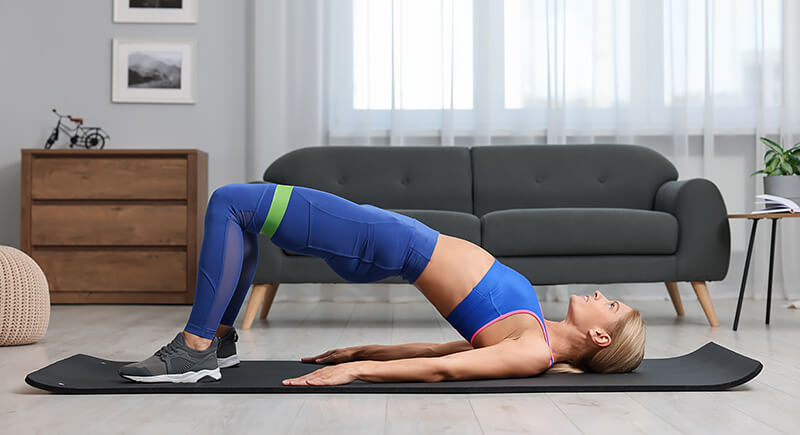Your Desk Job Is Wrecking Your Posture—Here’s How to Fix It
Slumping in front of a screen for hours might feel normal, but it’s sneakily messing with your spine. Make smart changes that protect your posture without quitting your job or living in the gym. If you’re sick of feeling like a question mark, this list is for you.
Your Chair Might Be the Problem, Not You

Credit: Canva
Most office chairs are built for appearances, not your spine. The American Chiropractic Association says poor lumbar support is a common trigger for lower back pain. A chair that doesn’t let your feet rest flat or lacks a slight curve in the lower back area does more harm than good.
Stop Staring Down at Your Screen

Credit: iStockphoto
Laptop screens are often positioned too low for a healthy eye level. Looking down even slightly puts 50 to 60 pounds of force on your neck. Raise the screen so your eye level is at the top third.
Stretch Like You Mean It—Not Just Once a Day

Credit: iStockphoto
One toe-touch at lunch won’t undo hours of desk time. Your body craves movement every 30 minutes. Try standing up to stretch your chest, rotate your shoulders, or do a few neck rolls. Frequent, gentle movements keep muscles from stiffening into those dreaded desk-job knots.
Desk Setup Needs a Reality Check

Credit: iStockphoto
Your screen should be at arm’s length, with your elbows bent at 90 degrees and your wrists flat, not flexed. A poor setup causes you to hunch, lean, or crane forward. With this layout in mind, spend five minutes checking your desk ergonomics and adjusting things accordingly.
Beware the Perils of “Perching”

Credit: iStockphoto
Sitting on the edge of your seat feels productive, but it’s wrecking your spine. Without back support, your muscles overwork trying to stay upright. This builds tension and throws off alignment. Scoot back fully into the chair and let the backrest do its job—it’s not laziness, it’s strategy.
Neck Pain? Check Your Phone Habits Too

Credit: iStockphoto
Even if your desk posture is perfect, hours of scrolling with your head angled downward undo the good work. “Tech neck” is a real phenomenon that leads to a forward head posture. Try holding your phone at eye level and using voice-to-text to reduce repetitive neck strain.
Try the 20-8-2 Rule for Better Movement

Credit: iStockphoto
Cornell University research recommends a 30-minute cycle: sit for 20 minutes, stand for 8, and move for 2. This breaks the cycle of stiffness without wrecking your workflow. Walking to get water or doing calf raises while on a call helps wake up your muscles.
Strengthen the Muscles That Keep You Upright

Credit: iStockphoto
Your posture doesn’t depend just on bones—it’s about muscle endurance. Weak glutes, a soft core, and tight hip flexors create imbalance. Adding planks, glute bridges, or wall sits to your weekly routine can help keep your spine supported even when you’re in meetings all day.
Breathing Could Be Ruining Your Alignment

Credit: iStockphoto
Strange but true: shallow chest breathing tightens neck and shoulder muscles. Diaphragmatic breathing, which uses your belly, relaxes those areas. Try inhaling slowly through your nose, expanding your belly, not your chest, and exhaling through pursed lips. All of these also help with focus and stress.
Slouching Is Contagious—Fix Your Surroundings

Credit: iStockphoto
When coworkers slump, it’s easy to subconsciously mirror them. Chairs without support, dim lighting, and cluttered desks can all contribute to poor posture. Surround yourself with better cues: clean your space and add a mirror to check your form. You can even try a lumbar pillow as a not-so-subtle nudge.
Mindfulness Isn’t Just for Stress—It Helps Posture Too

Credit: iStockphoto
When focused on a task, people tend to forget their bodies completely. Doing a quick mental check-in—“Where are my shoulders? Is my jaw clenched?”—can pull you out of autopilot. Setting a timer or using a posture reminder app brings awareness back before tension takes hold.
Foot Position Can Make or Break Your Spine

Credit: iStockphoto
Dangling feet, crossed legs, or perching on toes affect spinal alignment. Your feet should rest flat on the floor or a footrest. That stable base sets up the rest of your body to stack correctly, reducing strain from your ankles to your neck.
Hydration Isn’t Just About Energy—It Affects Joints Too

Credit: iStockphoto
Dehydrated spinal discs shrink slightly and reduce cushioning between vertebrae. This adds pressure and encourages slouching. Drinking enough water keeps spinal discs more pliable and joints moving smoothly. On top of that, more hydration means more trips to the restroom—perfect built-in movement breaks during the workday.
You Don’t Need to “Sit Up Straight” All the Time

Credit: iStockphoto
Forcing yourself into a rigid upright position can backfire. Posture is not about staying frozen; it’s about moving smart. Instead of locking into one pose, keep your spine neutral and supported while allowing small shifts and movements. Think balance, not stiffness, and you’ll be good to go.